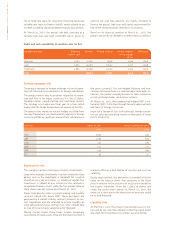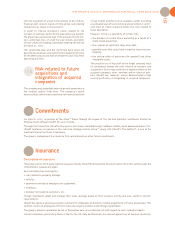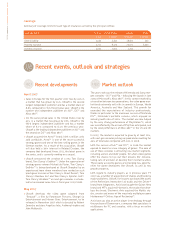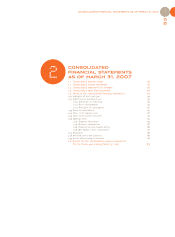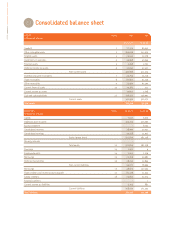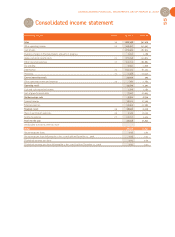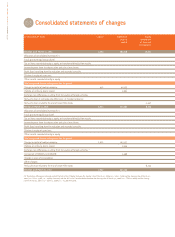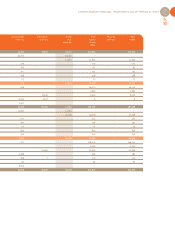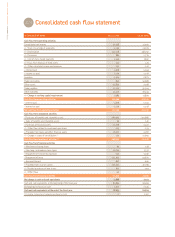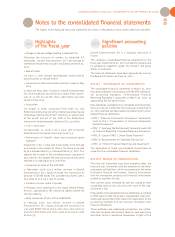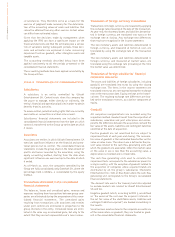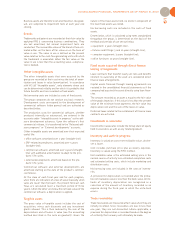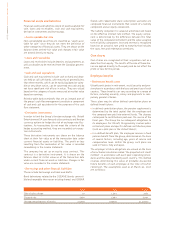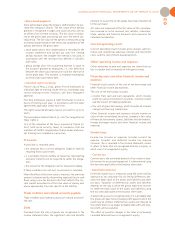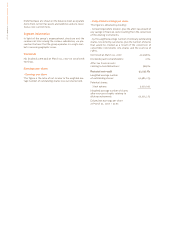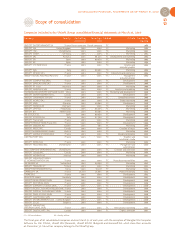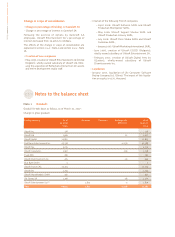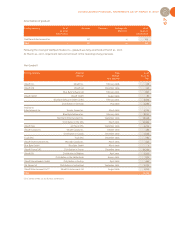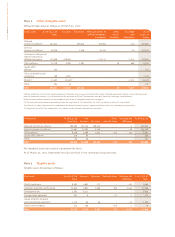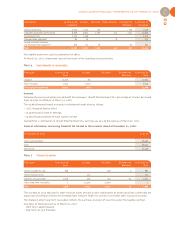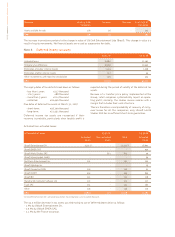Ubisoft 2006 Annual Report Download - page 72
Download and view the complete annual report
Please find page 72 of the 2006 Ubisoft annual report below. You can navigate through the pages in the report by either clicking on the pages listed below, or by using the keyword search tool below to find specific information within the annual report.
UBISOFT • FINANCIAL REPORT 2007
circumstances. They therefore serve as a basis for the
exercise of judgment made necessary for the determina-
tion of the accounting values of assets and liabilities that
cannot be obtained from any other sources. Actual values
can differ from estimated values.
Given that the decisions made by management when
applying the IFRS can have a significant impact on the
financial statements and that the estimates pose a serious
risk of variations during subsequent periods, these deci-
sions and estimates are explained in notes concerning
impairment tests on goodwill, other intangible assets and
tangible assets.
The accounting methods described below have been
applied consistently to all the periods presented in the
consolidated financial statements.
The accounting methods have been applied consistently by
the Group entities.
2.5.2.3 Principles of consolidation
Subsidiaries
A subsidiary is an entity controlled by Ubisoft
Entertainment SA. Control exists when the company has
the power to manage, either directly or indirectly, the
entity’s financial and operational policies in order to obtain
benefits from its activities.
To assess control, potential voting rights that are currently
exercisable or convertible are taken into account.
Subsidiaries’ financial statements are included in the
consolidated financial statements from the date on which
control is transferred to the Group up to the date at which
it ceases.
Associates
Associates are entities in which Ubisoft Entertainment SA
exercises significant influence on the financial and opera-
tional policies but no control. The consolidated financial
statements include the group share in the total amount of
profits and losses recorded by the associates, using the
equity accounting method, starting from the date when
significant influence was exercised up to the date at which
it ended.
As of March 31, 2007, the companies controlled by the
Group are fully consolidated; only Gameloft SA, where the
percentage held is 18.89%, is consolidated by the equity
method.
Transactions eliminated in the consolidated
financial statements
The balances, losses and unrealized gains, revenue and
expenses resulting from transactions between group com-
panies are eliminated during the preparation of the conso-
lidated financial statements. The unrealized gains
resulting from transactions with associates and entities
under joint control are eliminated in proportion to the
group interests in the entity. Unrealized losses are elimi-
nated in the same way as unrealized gains, but only to the
extent that they are not representative of a loss in value.
Translation of foreign currency transactions
Transactions in foreign currency are measured by applying
the exchange rate prevailing at the date of the transaction.
At year-end, the monetary assets and liabilities denomina-
ted in foreign currency are translated into euros at the
exchange rate at closing. Any exchange rate differences
that result are recognized in the income statement.
The non-monetary assets and liabilities denominated in
foreign currency, and measured at historical cost, are
translated by using the exchange rate at the transaction
date.
The non-monetary assets and liabilities denominated in
foreign currency, and measured at market value, are
translated using the exchange rate prevailing at the time
the market value was determined.
Translation of foreign subsidiaries’ financial
statements into euros
The assets and liabilities of foreign subsidiaries, including
goodwill, are translated into euros by using the closing
exchange rate. The items in the income statement are
translated into euros at a rate approximating the exchange
rate at the transaction date. Equity are kept at the histori-
cal rate. The resulting exchange rate differences are boo-
ked to the translation reserves, as a distinct component of
equity.
Goodwill
All companies reorganizations are recorded using the
acquisition method. Goodwill result from the acquisition of
subsidiaries, associates and joint enterprises and corres-
pond to the difference between the acquisition cost and the
fair value of the assets, liabilities and contingent liabilities
identified at the date of acquisition.
Positive goodwill are not amortized but are subject to
impairment tests at each year-end closing. The recovera-
ble value of goodwill is then estimated based either on fair
value or value in use. The value in use is defined as the pre-
sent value related to the cash-flow generating units with
which the goodwill are associated. When the market value
or the value in use is less than the accounting value, a
depreciation is recorded and is irreversible.
The cash-flow generating units used to calculate the
impairment tests correspond to the subsidiaries present in
a single country, with the exception of goodwill related to
the acquisition of companies whose acquired brands are
distributed by all the group’s subsidiaries (Redstorm
Entertainment Inc. (US) or Blue Byte) where the cash-flow
generating unit corresponds to the Group’s consolidated
financial statements.
The discount rate used is the treasury bond rate adjusted
to exclude market risks related to Ubisoft Entertainment
SA and tax.
Negative goodwill (which, according to IFRS 3, are defined
as “the excess of the cost over the acquirer's interests in
the net fair value of the identifiable assets, liabilities and
contingent liabilities acquired”) are booked immediately in
the results.
Since business assets entered in the corporate accounts are
of the same nature as goodwill, they are treated as good-
will in the consolidated financial statements.


